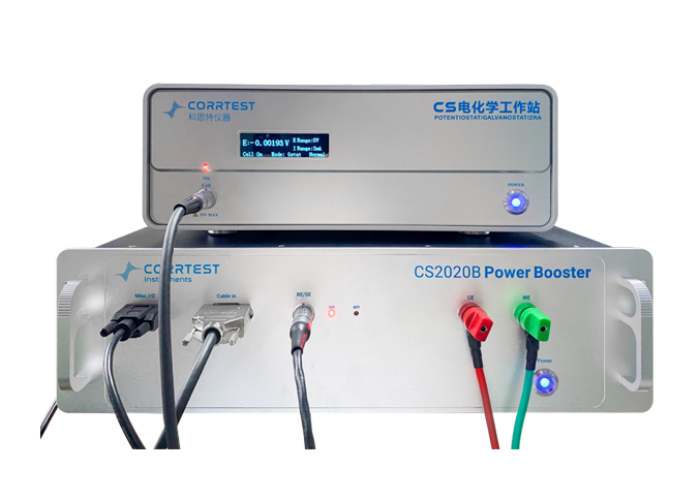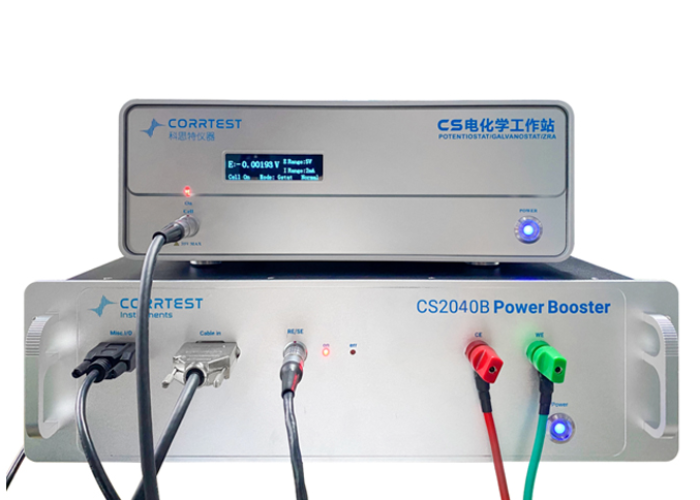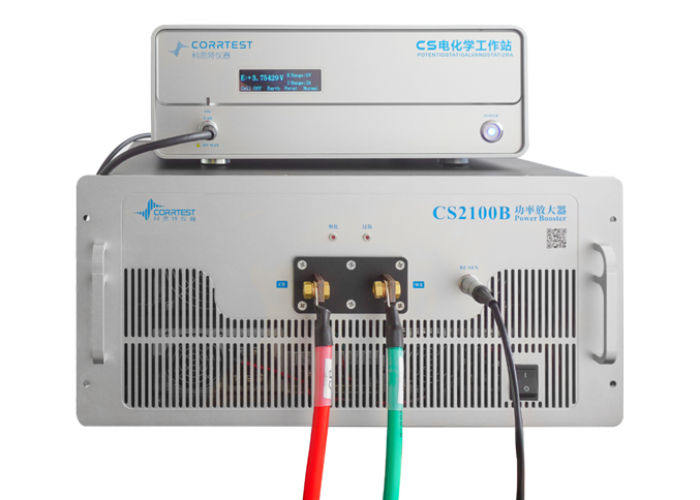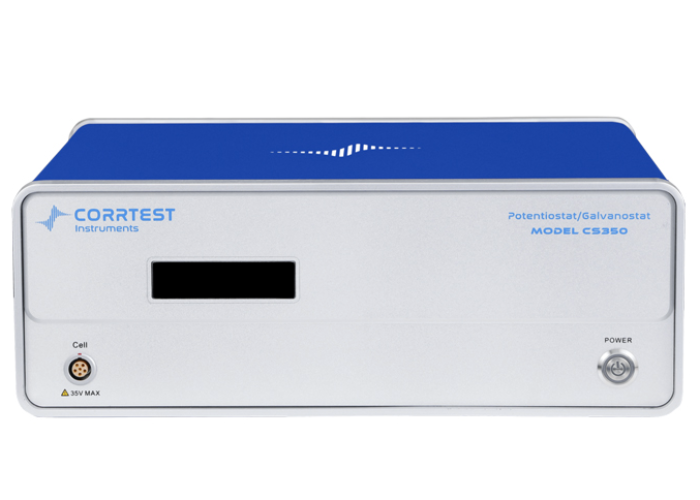
CS310M
Single channel potentiostat / galvanostat with EIS – Pulse Techniques not available
CS310M Highlights
The CS310M electrochemical workstation (potentiostat/galvanostat) is a versatile instrument designed for electrochemical analysis with built-in EIS capability. It integrates a digital function generator, fast data acquisition, and precision control, making it a reliable solution for corrosion testing, battery studies, sensor development, and teaching applications. With robust hardware and stable software, it offers accurate measurements and smooth operation.
Applications
- Electrosynthesis, electrodeposition, and anodic oxidation
- Electrochemical sensor development and general analysis
- Testing of energy materials such as batteries, fuel cells, and supercapacitors
- Investigating corrosion behaviour in aqueous, concrete, and subsurface materials
- Evaluation of inhibitors, coatings, stabilisers, and cathodic protection systems
Electrochemical methods/techniques – Comparison between models
CS350M (with integrated EIS)
This is the most advanced model in the series, offering a full suite of electrochemical techniques, including electrochemical impedance spectroscopy (EIS). It’s highly versatile and well-suited for research, industrial applications, and academic teaching environments.
CS310M (with integrated EIS)
Equipped with EIS functionality, the CS310M supports essential electrochemical methods but offers fewer voltammetry techniques than the CS350M. It provides a cost-effective solution for users focused on corrosion analysis, battery testing, and similar applications.
CS300M (without EIS)
This model includes a wide range of voltammetric functions but does not support EIS. It is typically chosen for applications like trace heavy metal ion detection and other routine electrochemical measurements where impedance analysis is not required.
Technical Specifications
Precision engineering for accurate measurements
| Electrode configuration | 2-, 3-, or 4-electrode system |
|---|---|
| Compliance voltage | ±21 V |
| Potential range | ±10 V (customizable to ±12 V) |
| Current range | ±2 A (10 programmable ranges) |
| Potential resolution | 1 µV (≤10 Hz), 3 µV (>10 Hz) |
| Current resolution | 1 pA |
| EIS frequency range | 10 µHz – 1 MHz |
| Bandwidth | Frequency span covering eight decades, with both automatic and manual adjustment |
| Interface | USB 2.0 |
| Software | Windows 10 / 11 compatible |
| Dimensions | 36.5 × 30.5 × 16 cm |
| Weight | 6.5 kg |
Methods/Techniques
Want to learn more about these techniques?
Check out our Introduction to Electrochemical Techniques blog for an in-depth overview of their principles and applications.
Resources & Downloads
Everything you need to get started
CS310M Brochure
CS310M Brochure
Publications
Research powered by Squidstat technology
Fabrication and Shell Optimization of Synergistic TiO 2 -MoO 3 Core–Shell Nanowire Array Anode for High Energy and Power Density Lithium-Ion Batteries
High-stable nonflammable electrolyte regulated by coordination-number rule for all-climate and safer lithium-ion batteries
Solvate ionic liquid boosting favorable interfaces kinetics to achieve the excellent performance of Li4Ti5O12 anodes in Li10GeP2S12 based solid-state batteries
High Pressure Rapid Synthesis of LiCrTiO4 with Oxygen Vacancy for High Rate Lithium-Ion Battery Anodes
Abundant cilantro derived high surface area activated carbon (AC) for superior adsorption performances of cationic/anionic dyes and supercapacitor application
Arrayed Heterostructures of MoS2 Nanosheets Anchored TiN Nanowires as Efficient Pseudocapacitive Anodes for Fiber-Shaped Ammonium-Ion Asymmetric Supercapacitors
Natural Biomass-Derived Hierarchical Porous Carbon Synthesized by an in Situ Hard Template Coupled with NaOH Activation for Ultrahigh Rate Supercapacitors
High-performance all-inorganic portable electrochromic Li-ion hybrid supercapacitors toward safe and smart energy storage
A Novel Phase-Transformation Activation Process toward Ni–Mn–O Nanoprism Arrays for 2.4 V Ultrahigh-Voltage Aqueous Supercapacitors
Nitrogen-doped activated carbons derived from a co-polymer for high supercapacitor performance
Carbon-Stabilized High-Capacity Ferroferric Oxide Nanorod Array for Flexible Solid-State Alkaline Battery-Supercapacitor Hybrid Device with High Environmental Suitability
Facile Formation of a Solid Electrolyte Interface as a Smart Blocking Layer for High-Stability Sulfur Cathode
Encapsulating Sulfides into Tridymite/Carbon Reactors Enables Stable Sodium Ion Conversion/Alloying Anode with High Initial Coulombic Efficiency Over 89%
Recyclable molten-salt-assisted synthesis of N-doped porous carbon nanosheets from coal tar pitch for high performance sodium batteries
A flexible self-charged power panel for harvesting and storing solar and mechanical energy
Enhancing the efficiency of CdS quantum dot-sensitized solar cells via electrolyte engineering
Solution-Processed Laminated Perovskite Layers for High-Performance Solar Cells
Fast and Controllable Electric-Field-Assisted Reactive Deposited Stable and Annealing-Free Perovskite toward Applicable High-Performance Solar Cells
Bifunctional Dynamic Adaptive Interphase Reconfiguration for Zinc Deposition Modulation and Side Reaction Suppression in Aqueous Zinc Ion Batteries
High-Performance Aqueous Zinc Batteries Based on Organic/Organic Cathodes Integrating Multiredox Centers
A laser-scribed wearable strain sensing system powered by an integrated rechargeable thin-film zinc-air battery for a long-time continuous healthcare monitoring
Engineering Polymer Glue towards 90% Zinc Utilization for 1000 Hours to Make High-Performance Zn-Ion Batteries
Cost-effective Chlorella biomass production from dilute wastewater using a novel photosynthetic microbial fuel cell (PMFC)
Simultaneous Cr(VI) reduction and bioelectricity generation in a dual chamber microbial fuel cell
A self-driven fuel cell to recycle (NH4)2SO4 fertilizer and energy from desulfurization solution
Effect of in-situ transverse magnetic field on microstructure,mechanical properties and corrosion resistance of the directed energy deposited 316L stainless steel
Significance of waveform design to achieve bipolar electrochemical jet machining of passivating material via regulation of electrode reaction kinetics
Synthesis and characterization of highly hydrophilic self-associating terpolymers: Rheological, thermal, and corrosion protection studies
Corrosion and slurry erosion wear performances of coaxial direct laser deposited CoCrFeNiCu1-xMox high-entropy coatings by modulating the second-phase precipitation
Characterizations of the biomineralization film caused by marine Pseudomonas stutzeri and its mechanistic effects on X80 pipeline steel corrosion
A novel Mg-Gd-Y-Zn-Cu-Ni alloy with excellent combination of strength and dissolution via peak-aging treatment
Steel corrosion and corrosion-induced cracking in reinforced concrete with carbonated recycled aggregate
pH-triggered self-inhibition epoxy coating based on cerium-polyphenolic network wrapped carbon nanotube
Comparative study on corrosion behavior of Cu and Sn under UV light illumination in chloride-containing borate buffer solution
Monitoring corrosion fatigue crack formation on drill steel using electrochemical impedance spectroscopy: Experiment and modeling
Enriching Reaction Intermediates in Multishell Structured Copper Catalysts for Boosted Propanol Electrosynthesis from Carbon Monoxide
Multi-microenvironment synergistically promoting CO2 electroreduction activity on porous Cu nanosheets
Synergy of yolk-shelled structure and tunable oxygen defect over CdS/ CdCO3-CoS2: Wide band-gap semiconductors assist in efficient visible-light-driven H2 production and CO2 reduction
Customer Reviews
Related Product
Explore our precision instruments designed for electrochemical research and energy applications
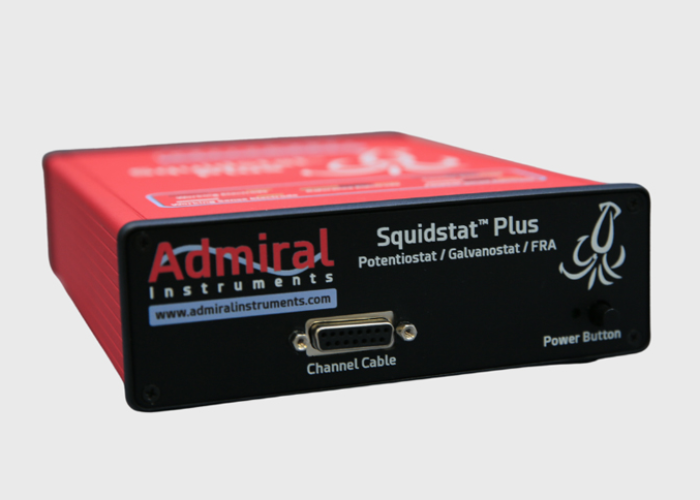
Squidstat Plus
- Voltage Scan Range: ±10 V
- Max Current: ±1 A
- EIS Frequency Range: 10 µHz - 2 MHz
- Best Current Accuracy: 1 nA
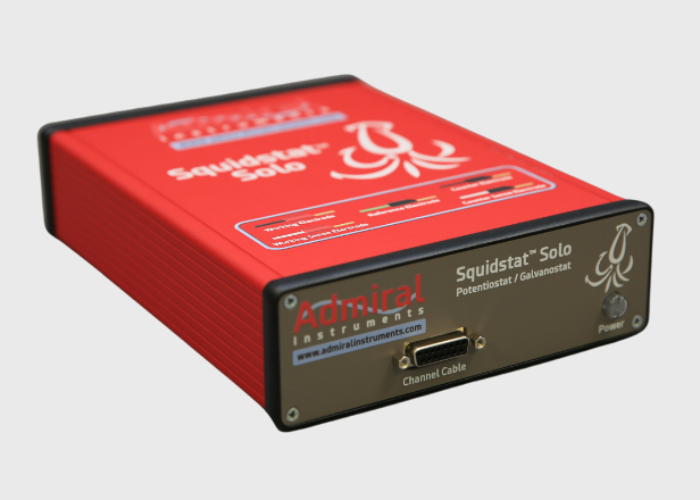
Squidstat Solo
- Voltage Scan Range: ±10 V
- Max Current: ±100 mA
- Best Current Accuracy : 1 nA
- Channels Per Unit: 1

Squidstat Penta
- Voltage Scan Range: ±10 V
- Max Current: ±5 A
- EIS Frequency Range: 10 µHz - 2 MHz
- Best Current Accuracy: 1 nA

Squidstat Decka
- Voltage Scan Range: ±10 V
- Max Current: ±10 A
- EIS Frequency Range: 10 µHz - 2 MHz
- Best Current Accuracy: 1 nA
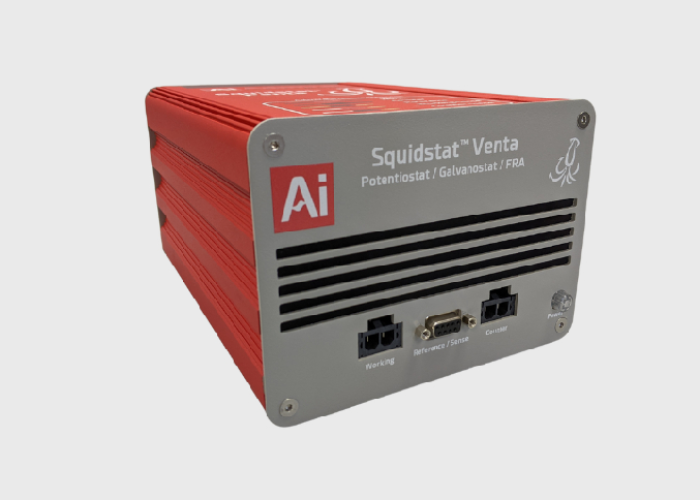
Squidstat Venta
- Voltage Scan Range: ±6 V
- Max Current: ±20 A
- EIS Frequency Range: 10 µHz - 2 MHz
- Best Current Accuracy: 1 nA
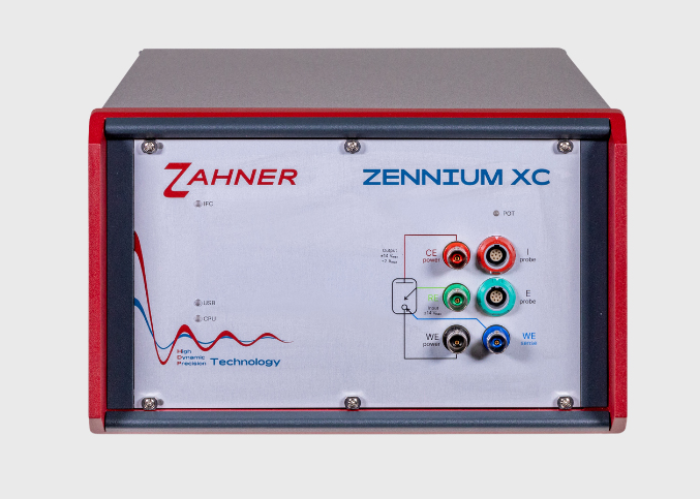
Zennium XC
- Voltage Scan Range: ±5 V and ±14 V
- Max Current: ±2 A
- EIS Frequency Range: 10 µHz to 5 MHz
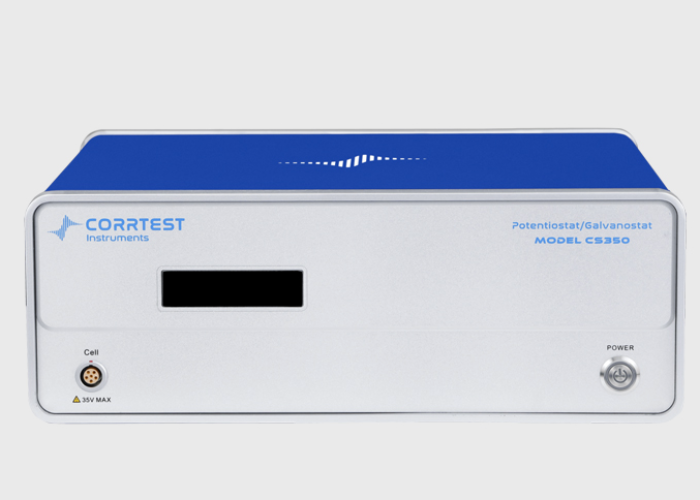
CS350M
- Potential Range: ±10 V (customizable to ±12 V)
- Current Range: ±2 A (10 programmable ranges)
- EIS Frequency Range: 10 µHz to 1 MHz
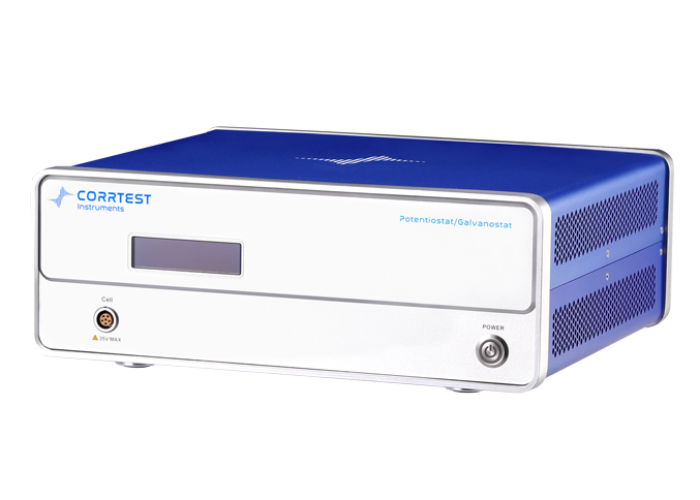
CS300M
- Potential control range: ±10 V (customizable to ±12 V)
- Current control range: ±2 A (10 programmable ranges)
- EIS frequency range: EIS not supported for this model
Still Wondering About Something?
Explore our FAQ for fast, clear answers to the most common questions—available 24/7.

